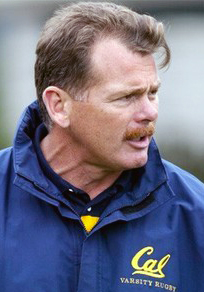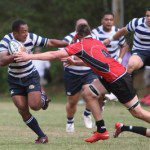

COLLEGE CAMPUS, USA – Some recent changes emanating out of USA Rugby HQ had me raising an eyebrow and with the CRC 7s happening in Philly this weekend, I thought I’d share them with you. There have been 3 major developments:
1) College Directors:
The Director of College Rugby position vacated by Todd Bell in fall, has been filled has been filled by two individuals; Richard Cortez and Tam Breckenridge. If you didn’t hear about it, don’t worry… neither did I – and I joined the USA Rugby email newsletter on about 3 different emails. Instead, I only stumbled upon the new appointees via Rugbymag.com while reading another article on that site.
Why was there not a bigger announcement made? Your guess is as good as mine. What really upsets me is that to hear an interview with these directors, you have to be one of Rugbymag.com‘s paid subscribers. That’s not knocking them – they got the scoop and are trying to make a living. What irks me, though, is that I pay dues to USA Rugby but have to pay to hear from newly-appointed directors on their goals and objectives?! I’d be more ticked if the candidates weren’t qualified – which they are. Red Flag.
2) College Eligibility Changes:
Previously:
-The five-year eligibility clock starts ticking on the first day of enrollment in any college or university.
-Eligibility can be extended for up to two years. Extensions typically granted for active military duty, church service, pregnancy, medical hardship, preventing enrollment, or previously attending a school without a rugby program
-Ambiguous rules governing multi-school teams
-Basic statement requiring amateur status
Now:
-Five-year eligibility clock begins the semester following High School graduation or an equivalent thereof.
-Eligibility can be extended for up to one year. Extensions granted for missing one full academic year (for a variety of qualifying reasons) during the five-year window, or for medical hardship preventing participation in rugby
-Consortium agreement defined and documentation required for multi-school eligibility
-Expanded definition regarding amateur status
There has been a radical change to the rules governing college eligibility. This change was done with the idea of leveling the playing field and falling more in line with USOC/NCAA regulations. In my opinion however, these new regulations do nothing more than hurt schools – primarily the schools with unique situations and are, coincidentally, very most competitive in rugby. Army, Navy, Air Force and the Mormon-based schools Utah, Utah Valley, Utah State and BYU. The schools that most benefit are schools like Cal, St. Mary’s and Arkansas St., because they negatively impact schools that often have a unorthodox curriculum for their students; Armed Forces schools and Mormon schools.

Skeptics believe this move was spearheaded by Jack Clark and Cal to consolidate power. There may be some basis for that assumption but Coach Clark and Cal have done many wonderful things for USA Rugby. The number of USA Eagles that came from that program and Jack’s work in securing sponsorship during the 90s when he was the Team USA coach prove that. But over the last few years, Cal has fallen a bit after winning 23 National titles in 24 years. This has much to do with the growth of youth rugby and its rise in other parts of California and Utah, not the Cal program being any less efficient. And some would argue that rather than help pull other teams up the ladder to their level, Cal wants to just pull up the ladder. BYU are currently the Defending 1A champs. Cal pushed for the 1A and college premier league position and then in its second year chose not to participate. Red Flag.
3) The Conference Structure:
Since last fall, there has been a push/mandate from USA Rugby for the Colleges to leave the territorial unions and create conferences. This idea seems geared to encourage college rugby teams to mirror other campus teams and be more in line with NCAA conference structures of their university. In fairness, this idea was also pushed by most of the major rugby universities. There was a feeling that USA Rugby was collecting dues but the college players and the college game weren’t getting proper handling. Hence, the College Director position and the start of the CDP. (Red Flag still in hand).
 So far, so good. There is progress as per this on Twitter:
So far, so good. There is progress as per this on Twitter:
“It’s official. PAC Rugby is here with founding members Cal, UA, ASU, Utah and UCLA. We will keep you updated on what the league will look like.”
Rumor has it CU, BYU and St Mary’s will also join. The goal is that a proper competitive college rugby league will get the attention of college television stations like the Pac 12 Network that will need sports to fill up their time slots. The SEC Conference has been mad with talks taking place for a Big 10 Conference as well as ACC. This sounds good but the problem is they are mirroring college football – which is the worst model. Red Flag.
By this model schools like Arkansas State, who played and lost to BYU in the semi-final, will be left out. Who, then, will add them to their conference? They are not a powerful brand. Furthermore what about my Alma mater, Niagara University? This model would have them in the Metro-Atlantic Athletic Conference with Iona, but distance makes that unrealistic.
Further, who will be the conference’s administrators and how will they be compensated? While schools like Cal and Penn State receive “Varsity” or “Extramural” status, granting them access to facilities, the large portion of College rugby clubs are viewed by their universites as nothing more than the Poetry Society. They get a slightly bigger budget, but not enough to travel more than 4 hours in a rented van (players still have to chip in).
So how is this 1A, 1AA, and such going to work? USA Rugby should take a better look at maybe the college hockey model and how that allows teams that may only be good in hockey (Boston U., Lake Superior St., University of North Dakota) to play in other conferences and still actively compete.
The bottom line is that there is no easy fix. USA Rugby and Nigel Melville have a daunting task at hand and we should all be in this to build, not break down. But perhaps there are some better ways to do this so that it’s done right from the opening kickoff. Maybe our international friends out there can impart some wisdom. Regardless, we look forward to your comments.
Stay low and pumping those legs.

